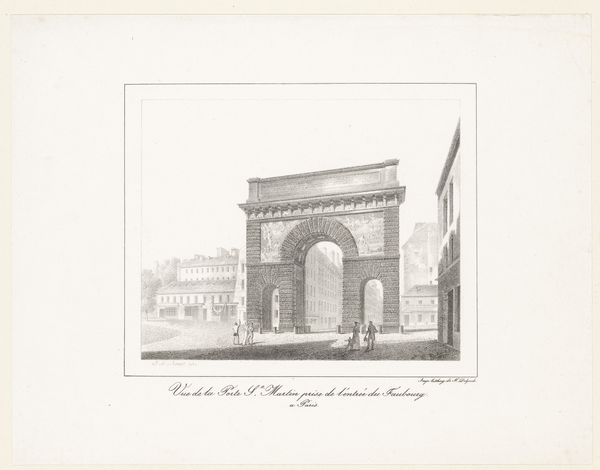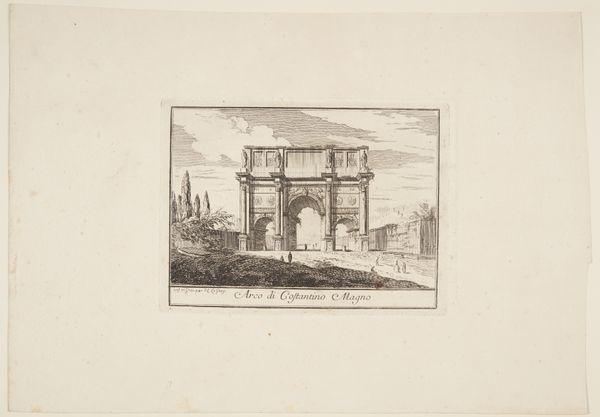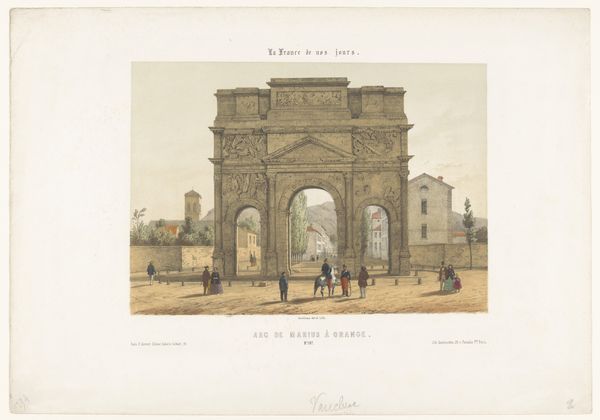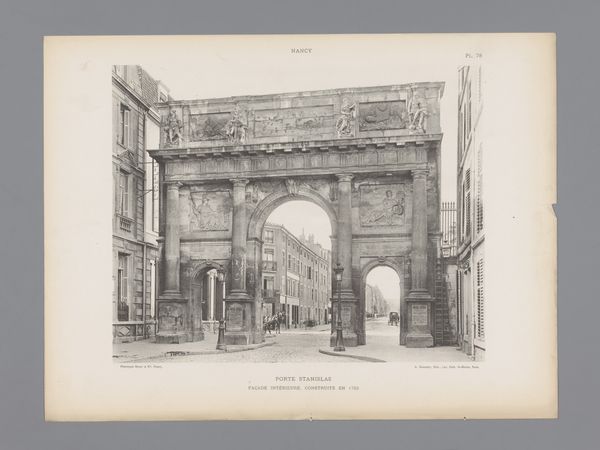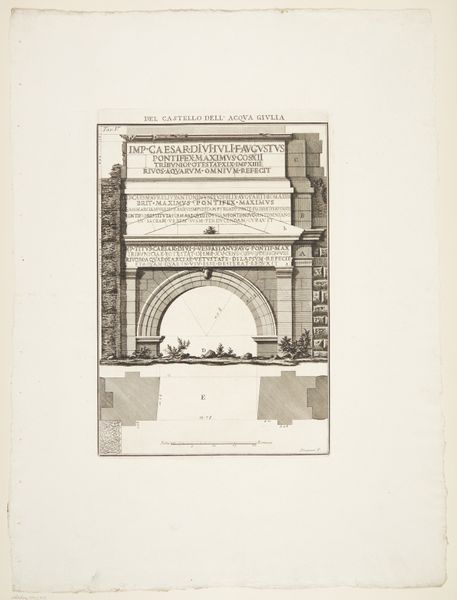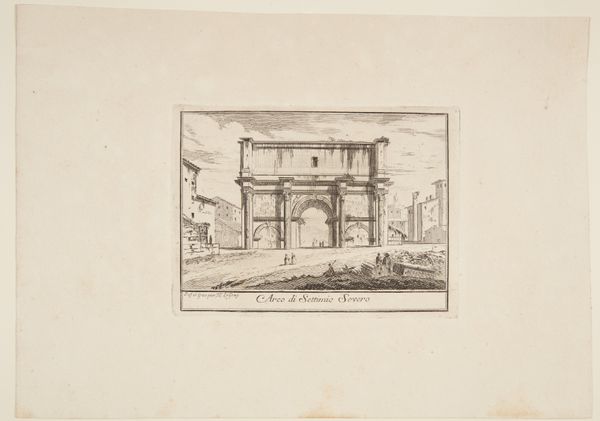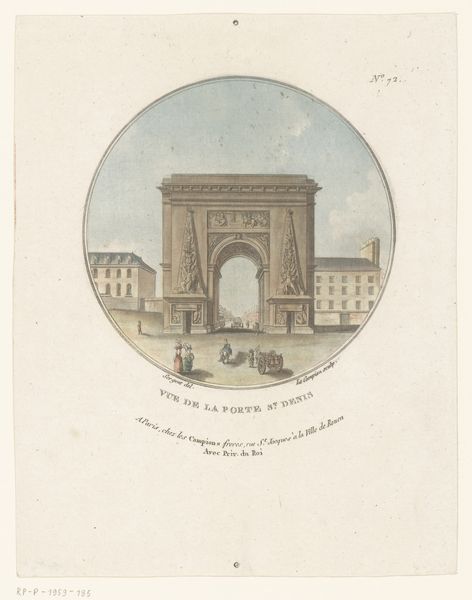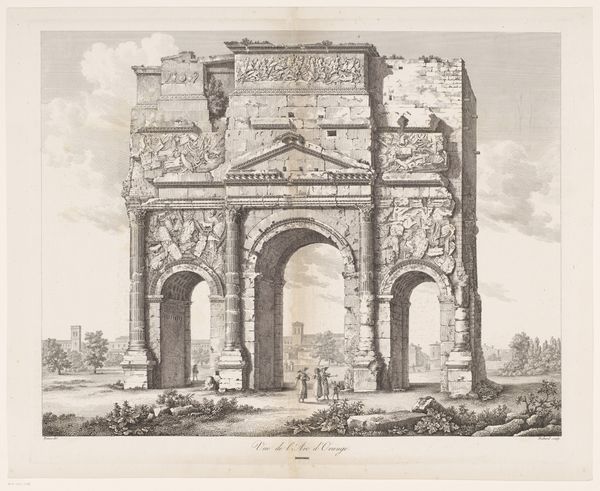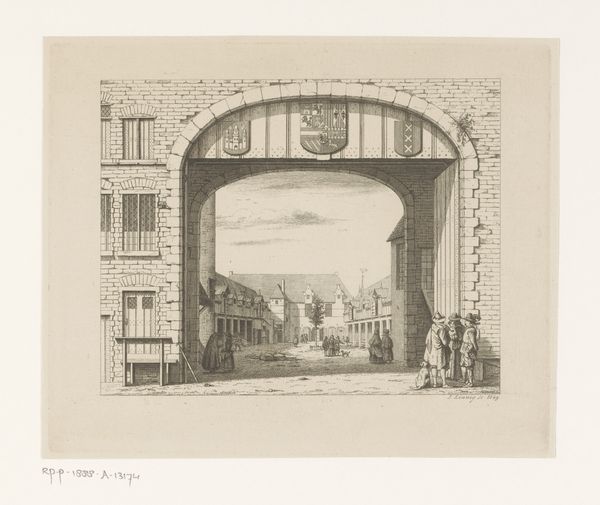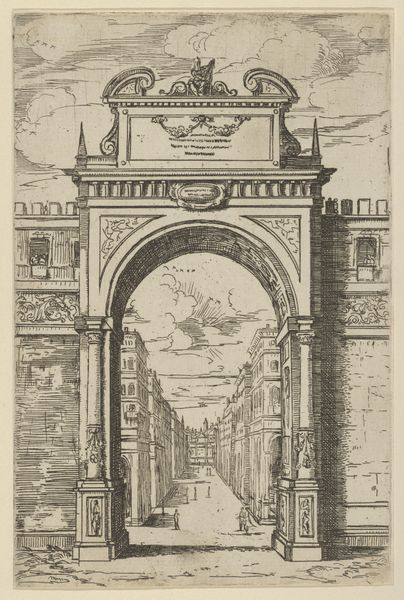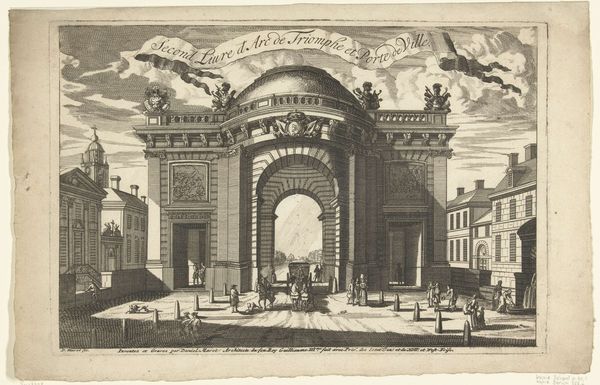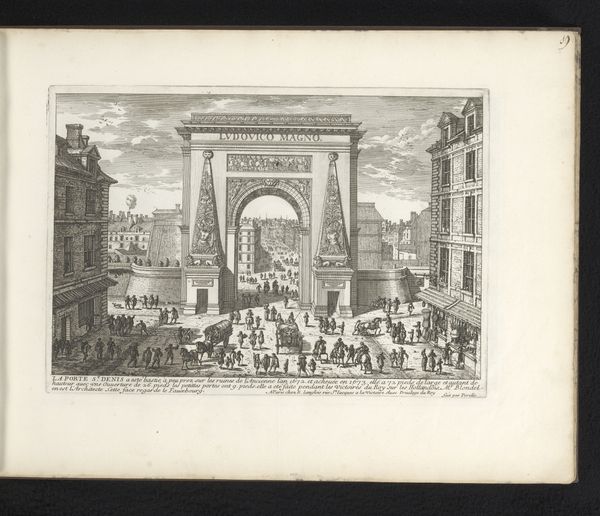
drawing, print, etching
#
drawing
#
neoclacissism
# print
#
etching
#
landscape
#
cityscape
Dimensions: height 245 mm, width 317 mm
Copyright: Rijks Museum: Open Domain
Editor: So, this is Jean-Baptiste Arnout's "Zicht op de Porte Saint-Denis in Parijs" from 1820, done with etching. The architecture is grand, but it feels almost…empty? What can you tell me about it? Curator: It's tempting to get caught up in the neoclassical aesthetics, but I'm most interested in thinking about how this etching was made and distributed. How does mass production change our relationship to these landmarks? Think about the labor involved in producing and selling these images. It connects to how people experience Paris in that era, through purchased images. Editor: That's interesting! I hadn't thought about it like that. I was focusing on the style, the lines. Curator: The etching itself is a commodity, reflecting the growing accessibility of art to the burgeoning middle class. This image serves as a way of mediating the lived experience of Paris, it becomes both a memory and a sort of early form of advertising. What do you think this kind of "souvenir" did to how the Parisian saw their own city? Editor: I guess it both democratized art and perhaps commercialized Parisian culture simultaneously. Like the commodification of an experience? Curator: Exactly. It makes us question what we value – the grand architecture itself or the ability to possess its image. Were the streets clean for this image to be produced, were people displaced? Editor: So much to consider beyond just what's on the surface! It shifts my focus to the who, how, and why of its creation and consumption. Curator: Precisely! The focus expands to materials, labor, and access in society. It changes the art appreciation paradigm entirely.
Comments
No comments
Be the first to comment and join the conversation on the ultimate creative platform.
